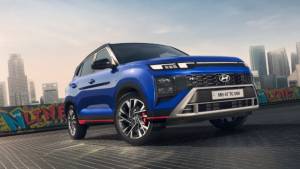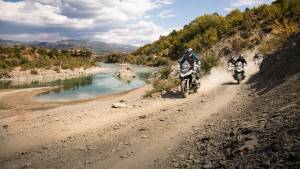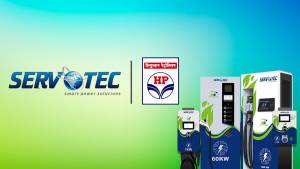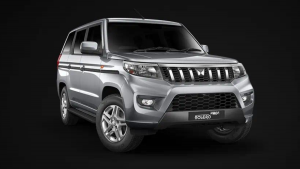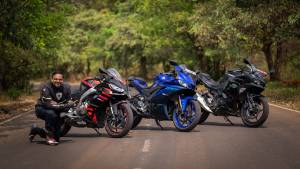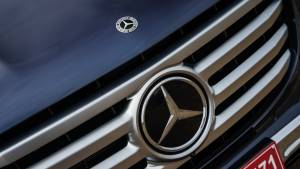Passes Duster?
Sirish Chandran
Updated: May 09, 2013, 04:12 PM IST
To be perfectly honest, driving a Dacia Duster across Europe was not something either Bert or I were looking forward to. Think about it, 2500km in a foreign land, two-three long days of driving over mostly high speed auto routes is something you do in a big, luxurious, features-loaded car. Instead, we were being handed what is known as the cheapest SUV in the world.
Instead of pre-judging the car, however, I spent some time looking up the car we were going to drive, on the Internet. Some new things came to light - things that made picking up the keys, setting the GPS up and getting out of Paris a lot easier in mood terms.
The Duster story began in 2009 at the Geneva Motor Show when Renault Design Central Europe presented a swish looking SUV concept wearing the mildly awkward name, some very practical design inside and a swoopy, slick form that impressed one and all. The Dacia badge on the nose - which was supposed to mean, inexpensive and practical to one and all - was all but forgotten in the buzz around the car. The concept sported the Logan's 1.5-litre in-line four petrol engine with fuel injection, 106PS and 240Nm of torque. It was based on the same B0 platform (Renault's minicar platform, with a stretched wheelbase that the Logan, the Sandero hatchback and eventually, the production Duster would be based upon) as the Logan and the initial price was speculated to be just Euro 15,000 or Rs 10 lakh (then, Rs 9.4 lakh as of today). At this point, the Logan was already being regarded very well by the industry - it set a super-low price bar, cut out all the fat and offered functional transportation at a superb price. The production Duster promised to do what the sedan did, for the SUV market. The latest model is available with one petrol and two diesel versions with the price difference between the 4x4 and 4x2 versions being about Euro 2000 or Rs 1.2 lakh approximately.
In production form, the Duster loses the swoopy, slinky form to a more normal design, but one that has two positive attributes - it is likeable and it is distinctive. In the course of our drive, both Bert and I were surprised at the number of people who gave our car a second glance. The bold grille, the rounded, but muscular lines, the carefully articulated rear - I love the metal 'halves' in the bootlid that complete the tail light lenses, and the pumped up sidebody all add up to a pleasant looking SUV that could easily be mistaken for something a couple of notches more expensive. I also think the wide-ness of the design - as opposed to the width of the car - make the Duster look extra-wide and less tall than it is.
It is inside, in fact, that you are strongly reminded of the Logan. There's no electric components in the doors like the Logan save for the speakers and once again it took us a while to get used to things like the rear (power) window switches aft of the handbrake, the front (power) window switches on the centre console and so forth. The meters are identical to the Logan in design, font and functionality and once again, the emphasis on functional, cost-efficient design is inescapable. The differences lie in the finish for the centre console, minor differences on the top surface of the dashboard and small elements like that. Substantially, you will be strongly reminded of the Logan, albeit a slightly more upmarket one. Being an SUV, you get a rotary knob at the bottom of the console, ahead of the gear lever which allows you to choose between the three drive modes - automatic, two-wheel drive and 'Locked' mode - which sends half the torque to the rear wheels and is recommended for low-speed, low-traction situations.

But despite the Logan cues, it doesn't look cheap. Our test car's centre console, for instance, was done in a metallic brown plastic that looked honest. Not expensive, not fake, just honest. The rest of the interiors echoed this theme. The design is pure function but there's nothing that looks cheap. The withering focus on cost-efficiency leads to quirks but as a package it works. For instance, the fuel filler cap has a finger notch so you can open it with one finger. This removes the need to have a wire and a pull switch inside the cabin. But you have to remember that the actual fuel cap is lockable - sort of how a motorcycle fuel tank would be - so you have to learn to carry the key out from the ignition to the back of the car to fill up. It bugged us, until we started remembering to do that.
What we did remember is that the Logan is a spacious car. And so is the Duster. It does sit on a wider track than the Logan and this isn't a surprise. However, the Scorpio is almost as spacious as the Duster. Three passengers in the rear would be easy and luggage space is ample as well. There isn't a third row of seats globally and we don't think it's retro-fittable either without severely cutting down the knee and leg room in the other two rows. On the whole, with comfortable seats, good shoulder room, more than adequate knee room and good luggage space, the Duster should be an easy car to live with in India. Its music system sounds good as well, and Toyota/Volkswagen should note that the Duster does in fact have an aux port as well.
To drive, again, the car was simplicity itself. We had the 105PS 1.5-litre dCI diesel - there is also an 85PS state of tune (or 90PS for the latest Euro5 versions) available for that engine - with permanent 4x4 (4x2 versions exist, and feature different rear suspension layouts). And lest you forget, this is essentially the same engine as the Logan or the new Micra Diesel, but the Indian Logan wears an even lower state of tune - one that brings 65PS and 160Nm of torque to the sedan. We must note here, that since we drove the car, the Duster's engines have been updated to Euro 5 compliant which has resulted in the 105PS diesel being uprated to 110PS. The diesel is quiet unless you're revving it and feels good to drive - though it does turn noisy when the speeds are raised to European highway speeds, about 140kmph. Is it quicker than the Scorpio? With similar power output and a weight advantage of 250-300kg, the Duster is quicker, though it doesn't actually feel it.
While we didn't get a chance to go off-road, the Duster proved to be comfortable enough for us to pull off two 1100km days without any discomfort. In France, where the 130kmph speed limit is ominously enforced, the car held the pace without undue stress aside from some tyre and wind noise. With this engine, the Duster will fit into Indian traffic very smoothly indeed. In fact, 110-115kmph, the speeds most of us get up when space permits on the highway is impressively smooth with tyre, wind and mechanical noises all remaining firmly hidden by the audio system. The weak link, perhaps, is the 6-speed manual gearbox whose shifts slot neatly enough but feels rubbery - a strong Logan reminder, points out Bert.
Just so you know, this is the same four-wheel drive system in the Duster that Nissan employs widely - it's the latter company's system. We left in auto-torque split mode - the car decides where the torque needs to go, though you can also switch to two-wheel drive or lock modes. From what we've read, the Duster is a lot more capable off-road than most soft-roaders. The approach and departure angles are 30 and 36 degrees with a breakover angle of 23 degrees - all good numbers. To put that in perspective, the Toyota Fortuner boasts 30, 25 and 25 respectively.
Which, in turn, reminds us of the X-Trail, which uses a similar - if not identical system - and proved very handy in the slush during our coffee test in Chikmagalur. And since we're on the subject, let us tell you about the underpinnings of this monocoque chassis. The front is similar to the Logan but with extra strengthening, a MacPherson strut style layout with wishbones. The 4x2 rear is a programmed-deflection H-beam which reduce intrusion into the boot. This torsion beam set-up is nearly standard in all our hatchbacks and comes with significant cost and packaging advantages over the multi-links setup. Our 4x4 test car had a specially developed for Duster multi-arm set-up - which is needed because a torsion beam set-up interferes in packaging terms with the space required for drive shafts and other components needed to power the rear wheels in a proper 4x4 set-up.
On the road, the ride quality of the Duster is pretty impressive. It feels deliberate and strong over bumps but is distinctly softer than the German vehicles tend to be. Some credit here must be given to the tyres, which sport 65-profile tyres (215/65R16), that's a tall profile which works well for ride quality. And while the handling is very good indeed, we didn't really take to the steering. It's a bit weird, without feel at times and then articulate at others and heavy to turn. Over a distance, it makes holding the car in the lane more work than it should be. Aside from that, the Duster feels a bit nervous in crosswinds at high speeds, and that's also down to the tyres more suited for car like duties rather than SUV, not the best spec off-road but certainly a sight more economical at mile munching. Otherwise it is a capable highway car, easy to park and compact enough to be punted around town with ease. The Mahindra Scorpio will come off significantly behind the Duster in a head-to-head dynamics comparison. The monocoque Duster is more sure-footed at speed, more confident overall and does not shudder over bumps like the body-on-chassis Scorpio does.
When we returned the Duster to the sweet folk at Renault, what remained with me is the title of it being the cheapest SUV in the world. I don't know who coined the sobriquet, but I don't think it does the Duster justice. It certainly feels a whole bunch of notches more capable than that, and while it carefully skirts the frills, it's a proper, proper SUV no matter how you consider it.
More importantly, Renault plans to launch the Duster here by April 2012. By that time, it will have already launched the Fluence (June, 2011) sedan and the Koleos (Diwali-ish, 2011) and settled into the groove. The Duster is likely to receive a global refresh early in 2012, and that updated car is what we are looking at having in Renault showrooms in April 2012. From what we hear, the Indian version might get a slightly different rear end from the global Dusters, it will definitely be branded Renault and not Dacia here. We expect that the grille will be reworked to bring it around to the Renault family grille. And that the - probably beige - dashboard is going to be noticeably more upmarket across the board, including the capability to accommodate a dealer-fitted GPS navigation accessory in many markets. The Indian Duster will be assembled at the Renault-Nissan Alliance plant near Chennai and will feature heavy localisation from the word go and therefore, competitive pricing.
The Duster is expected to compete with the Scorpio and the Tata Safari and as it stands today, if Renault were to match the Scorpio's price today, the Duster would be the better SUV. However, Mahindra's 'global' Scorpio is set to come out in June 2011 and that will set the real bar for the Duster. With the European base price hovering at Rs 7.3 lakh, we expect the localised Indian base version, probably with black bumpers (as it is over there as well), to come down to Rs 7 lakh for the base 4x2 version. This is a seriously competitive entry point for a carefully designed European SUV. The top versions should hit about Rs 9 lakh. For the money, you will get an extremely useful vehicle in your garage. Had the price rivalled the Scorpio exactly, I would have still tipped the Duster as the better overall car, but with a price advantage, the Duster only bolsters its case. Of course, Mahindra will have launched and stabilised its global Scorpio by then, which will feature monocoque construction et al, and the Duster will not win this fight as easily as it would appear. India loves its SUVs and Renault not only understands this, it's got a potential game-winner in the wings.
Price (Ex-Delhi)
Starts Rs 12.4 Lakhs
Starts Rs 12.4 Lakhs
Displacement
2179cc
2179cc
Transmission
Manual
Manual
Max Power(ps)
140
140
Max Torque(Nm)
320
320
Mileage
-NA-
-NA-
Price (Ex-Delhi)
Starts Rs 14.99 Lakhs
Starts Rs 14.99 Lakhs
Displacement
1956cc
1956cc
Transmission
Automatic
Automatic
Max Power(ps)
170
170
Max Torque(Nm)
350
350
Mileage
-NA-
-NA-
Price (Ex-Delhi)
Starts Rs 29.98 Lakhs
Starts Rs 29.98 Lakhs
Displacement
2755cc
2755cc
Transmission
Automatic
Automatic
Max Power(ps)
150
150
Max Torque(Nm)
500
500
Mileage
-NA-
-NA-
Related Stories
Top Stories
Latest Videos
Most Popular
1
2
1
2
Network18 Updates
Compare

